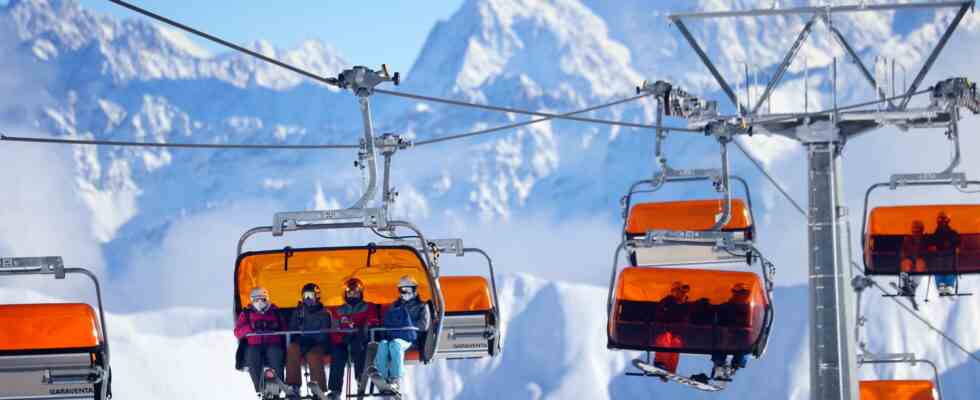Status: 11/24/2022 10:51 am
Inflation drives up prices in ski resorts. In Kaprun, Austria, the operators are at least trying not to transfer the entire increase to the guests – with some creative measures.
Norbert Karlsböck, CEO of Gletscherbahnen Kaprun, rides with us in the gondola up to the Kitzsteinhorn, on the glacier. There is always snow at over 3000 meters, and the gray clouds are one floor below. Karlsböck is in a good mood, mainly because of the guests, who are coming in greater numbers than expected – after a record summer in the mountains, now also at the start of winter.
“The longing has increased – for freedom, for natural space, for social contacts in a carefree way,” says Karlsböck. In the Austrian winter sports resorts, bookings are good again. Although everything has become more expensive.
Silent saving
Gernot Ressler from the Tauern SPA in Kaprun, an energy-guzzling wellness temple on a greenfield site, says they held back: “On average, that’s eight to nine percent, which we pass on to guests with price increases.” That is far below the inflation rate and the purchase prices. “Of course we try to dive through it,” he says.
Dive through the crisis. Also with saving energy – where the guest should not notice it. Then a sauna has less time. Some only increase the prices in the high season. Kai Uwe Zschau from Saxony got his room at the old price at the start of the season, he says. “I didn’t notice anything about the accommodation,” said Zschau. When paying for the day ticket, he didn’t check whether anything had changed.
“It’s always cheaper, of course”
In fact, this year Zschau has to pay 5.50 euros more for the day ticket. “The day ticket now costs 66 euros and has increased by 9.6 percent compared to the previous year,” says Karlsböck from the Gletscherbahn. That is less than the rate of inflation for everything else. Lech am Arlberg or Ischgl charge 67 euros a day, one euro more than in Kaprun. Everyone is careful not to break the 70 euro mark for the time being.
Valentino is standing at the halfpipe, his snowboard under his arm and squinting in the bright sun. He is from Australia. Not so bad here, he says. “It’s always cheaper, of course.” But he has already traveled to many other ski areas, which were even more expensive – and not necessarily nicer. “The halfpipes here are wonderful, good weather, you can’t ask for more,” says the Australian.
Less fast, less warm, more eco
A little less is always possible. Also save on the cable cars – and hope that you don’t notice it too much because of the high-tech ski pants. “Of course we don’t use seat heaters,” says Karlsböck. The cabins also travel at a reduced speed of around 20 percent. “That goes roughly in line with the reduction in power consumption.”
This is also carefully calculated. Explains Gernot Ressler from the Tauern SPA. On holiday, guests should only work up a sweat in the sauna, and not because of unpleasant questions from those at home later. The electricity in Tyrol and Vorarlberg comes mainly from hydroelectric power plants in the region. The SPA resort uses more than 70 percent biogas and 100 percent green electricity. “Of course, this is very, very important for our guests, so that they don’t have a bad conscience about going on vacation, so to speak.”
Austria: Skiing is getting more expensive, your butt stays cold
Wolfgang Vichtl, ARD Vienna, November 24, 2022 8:15 a.m

